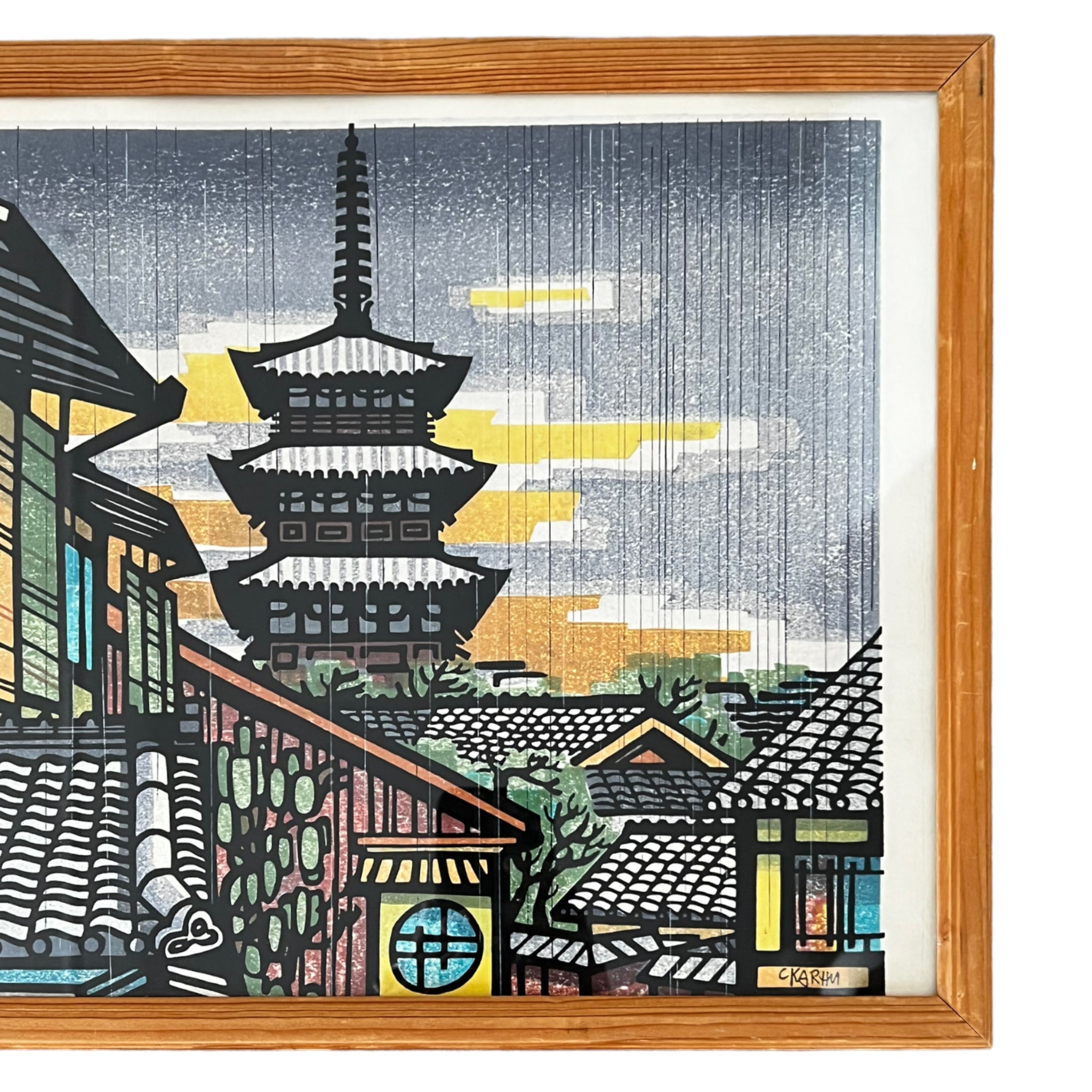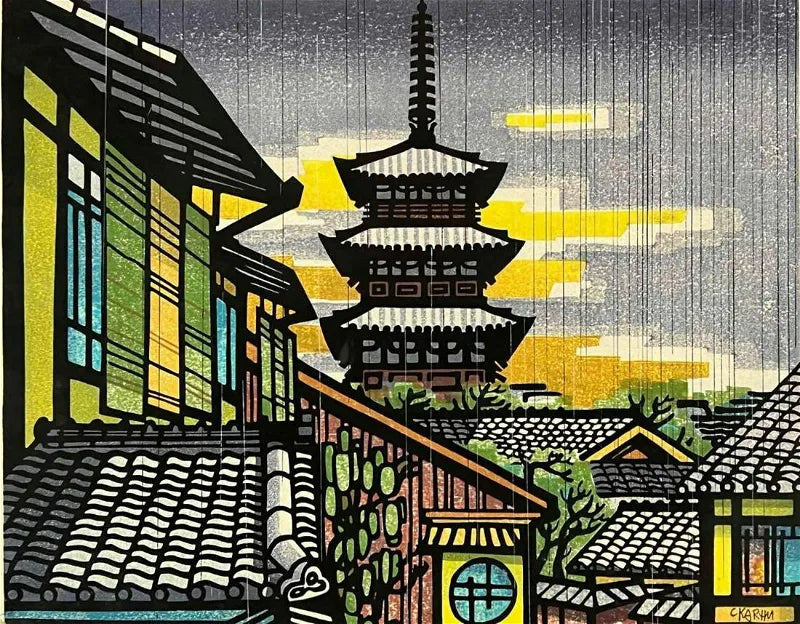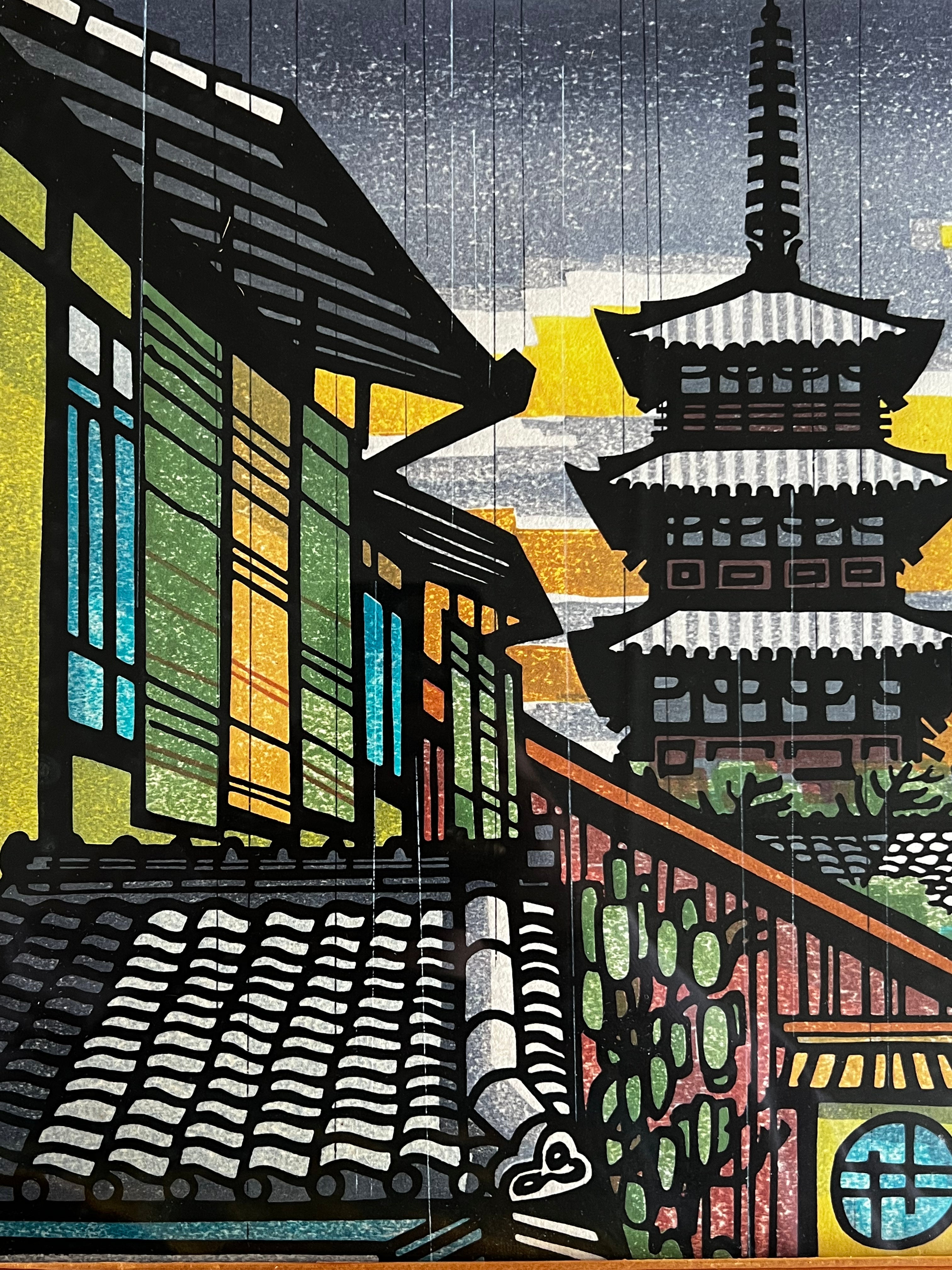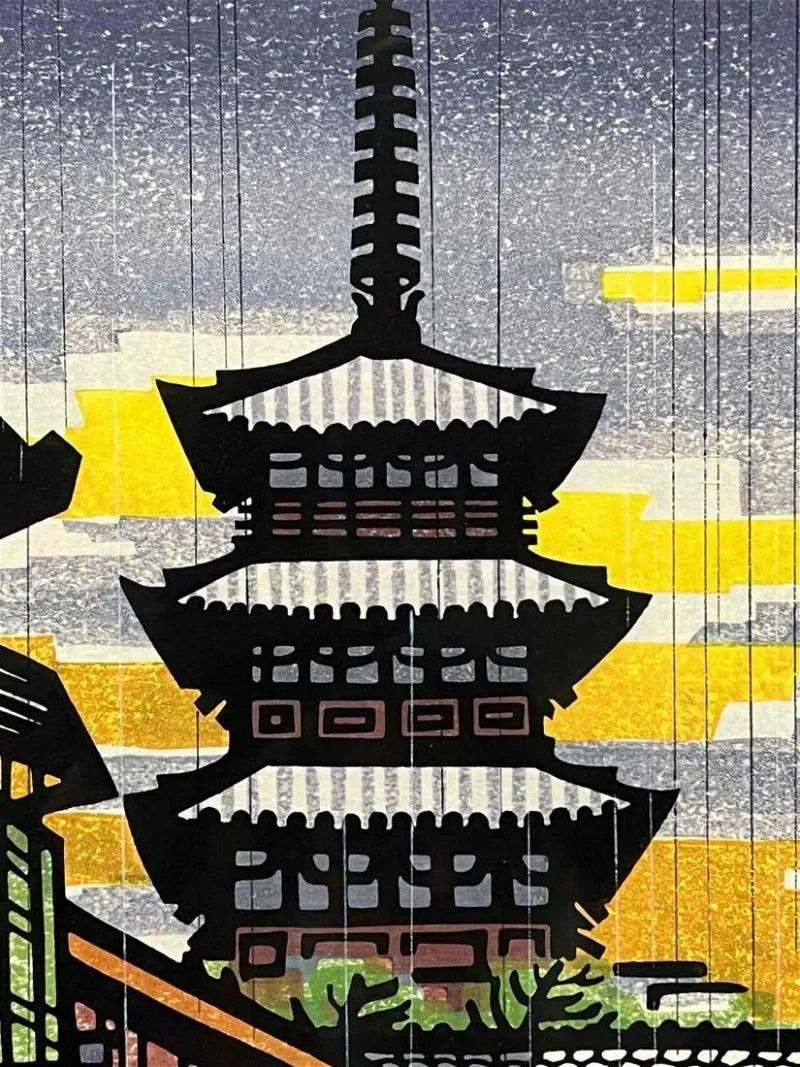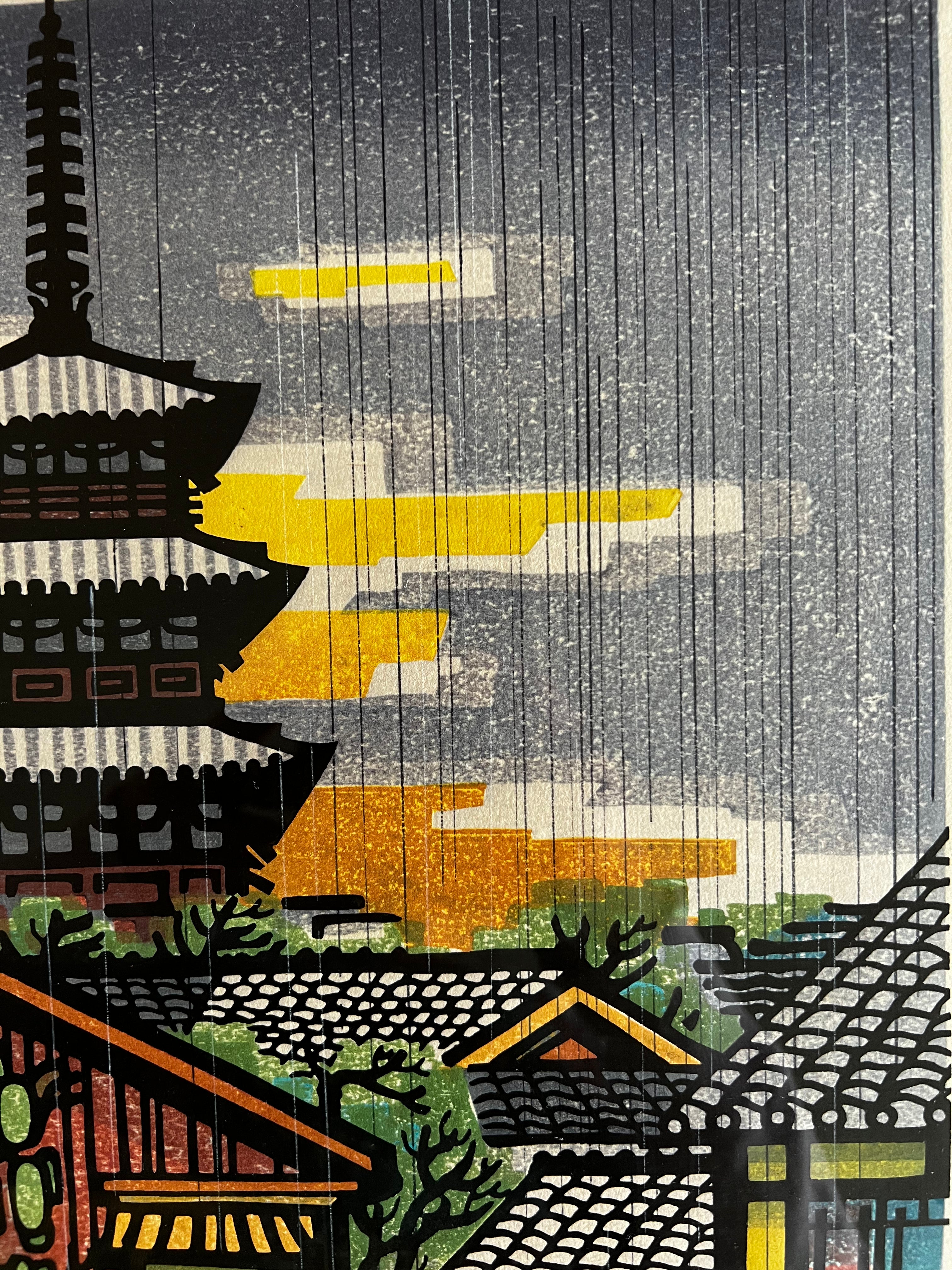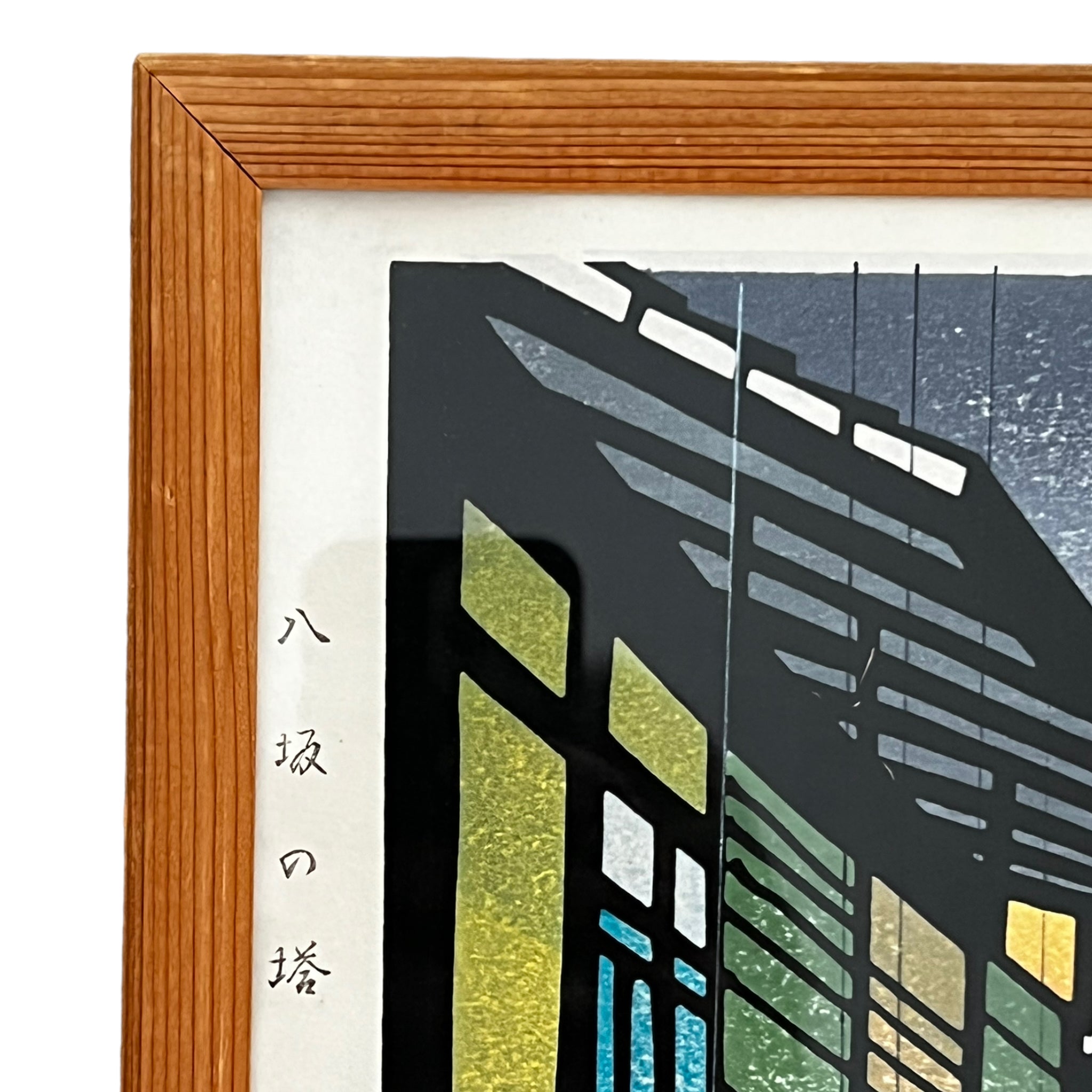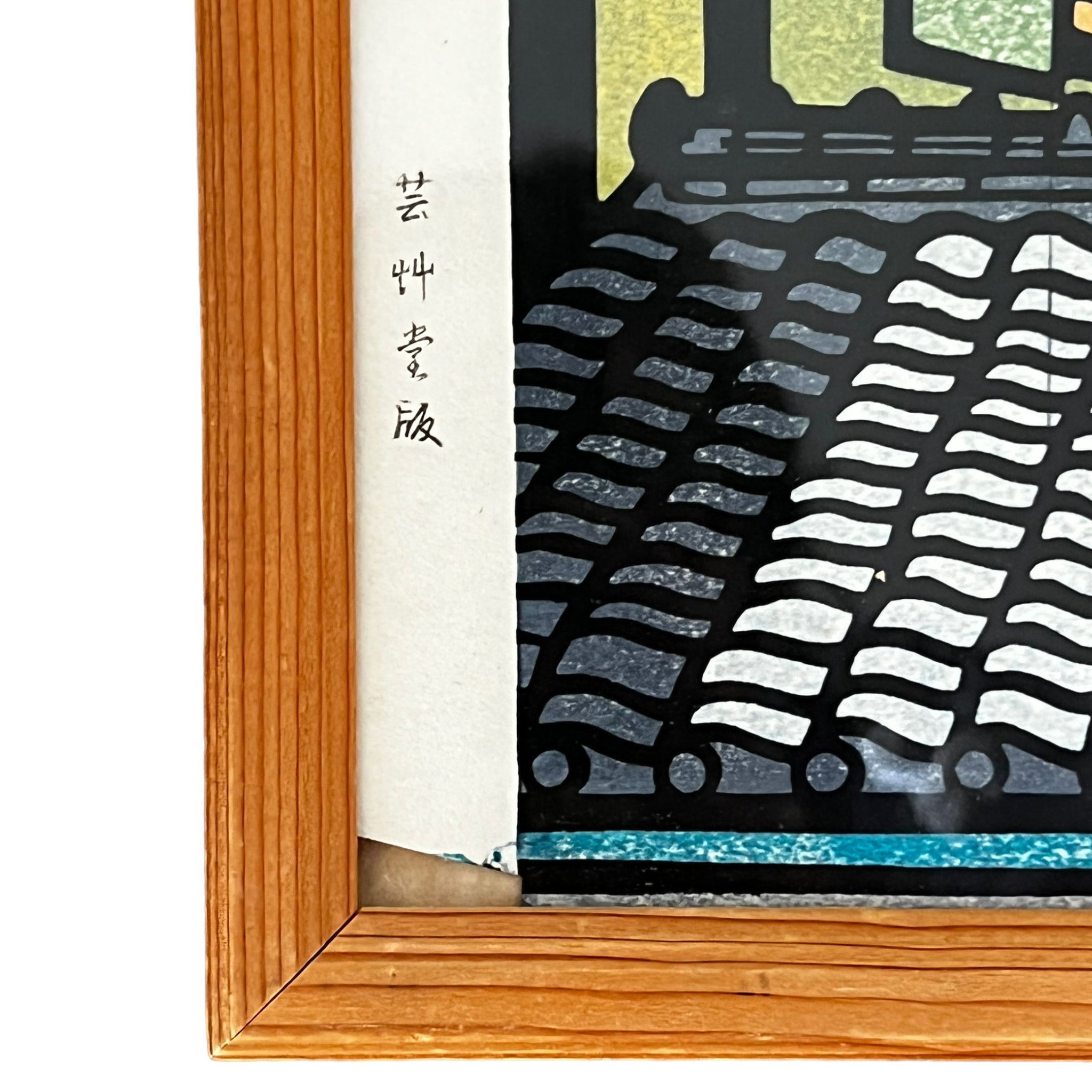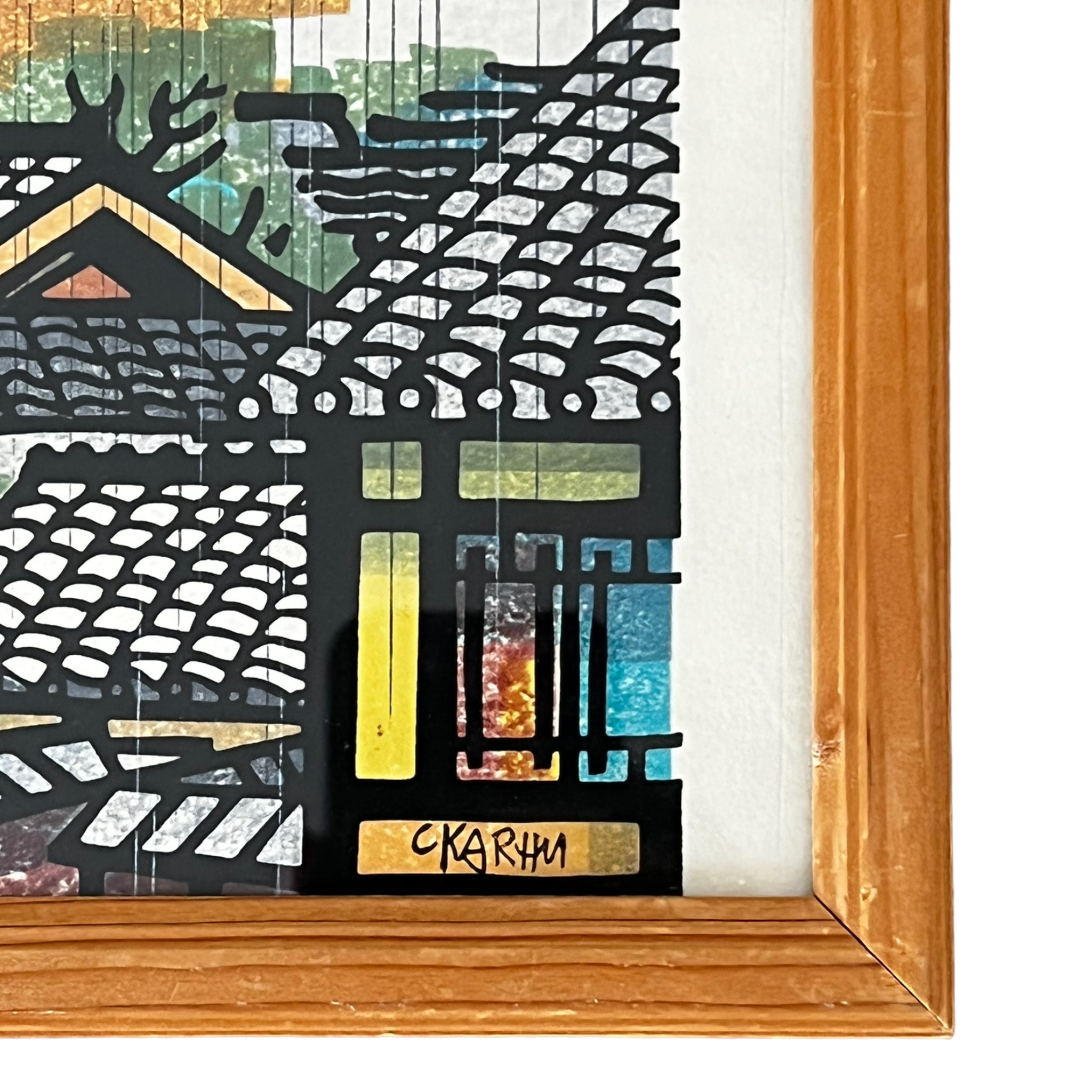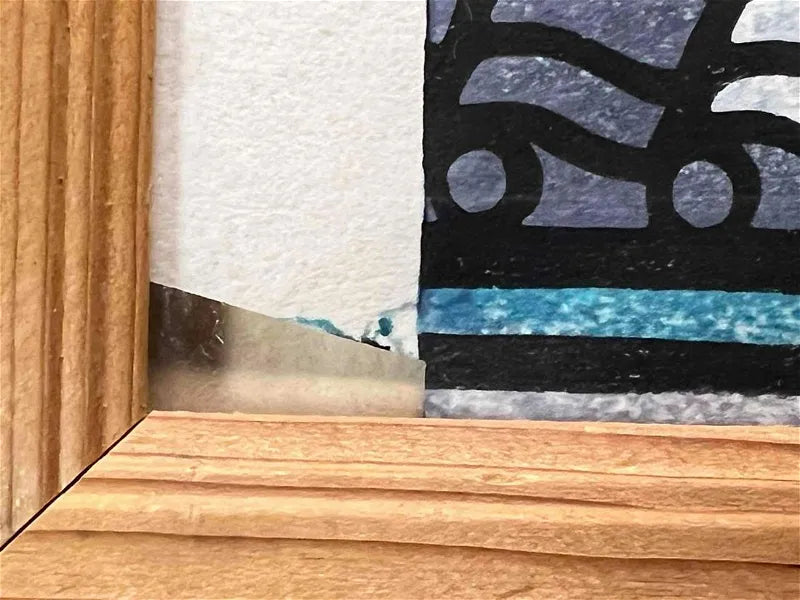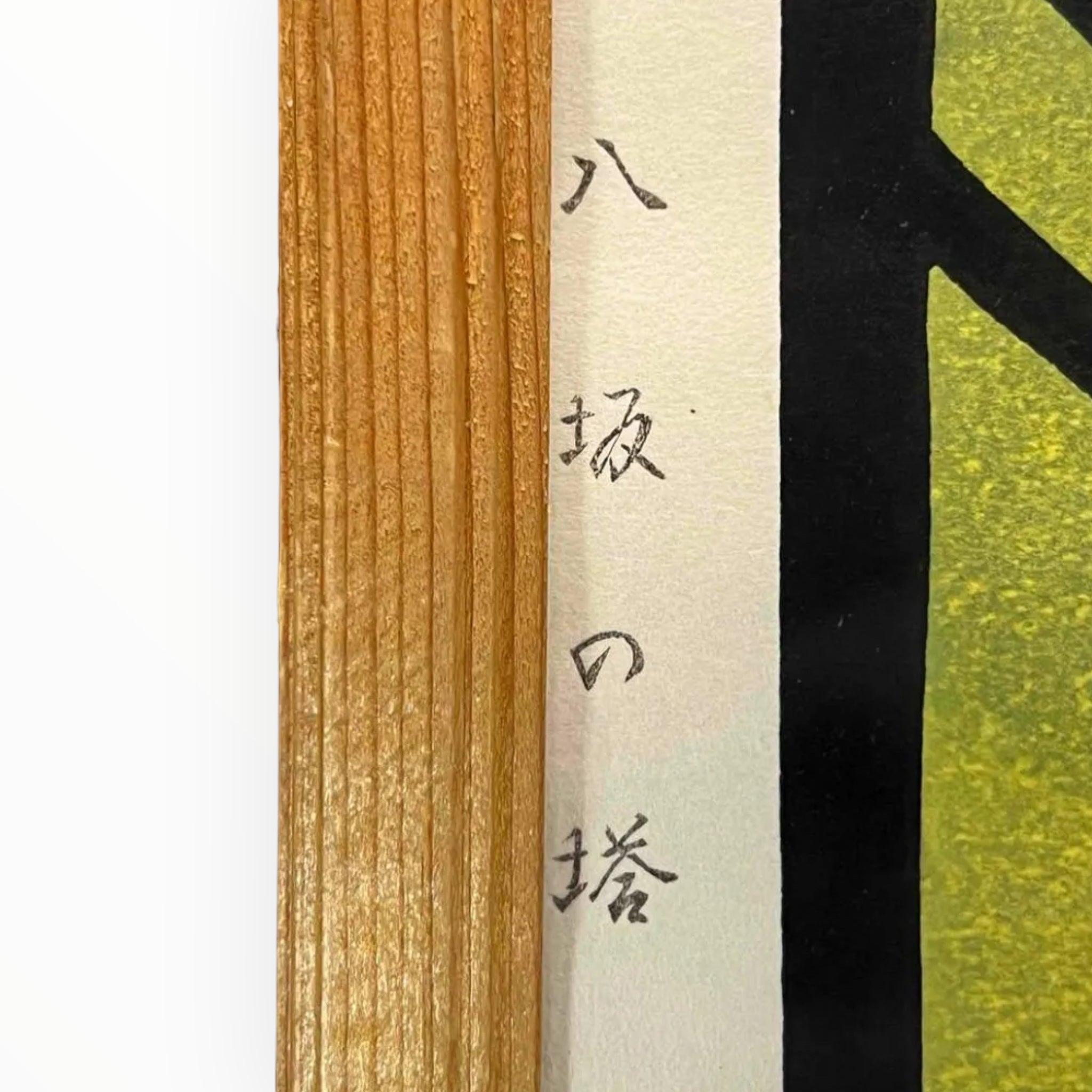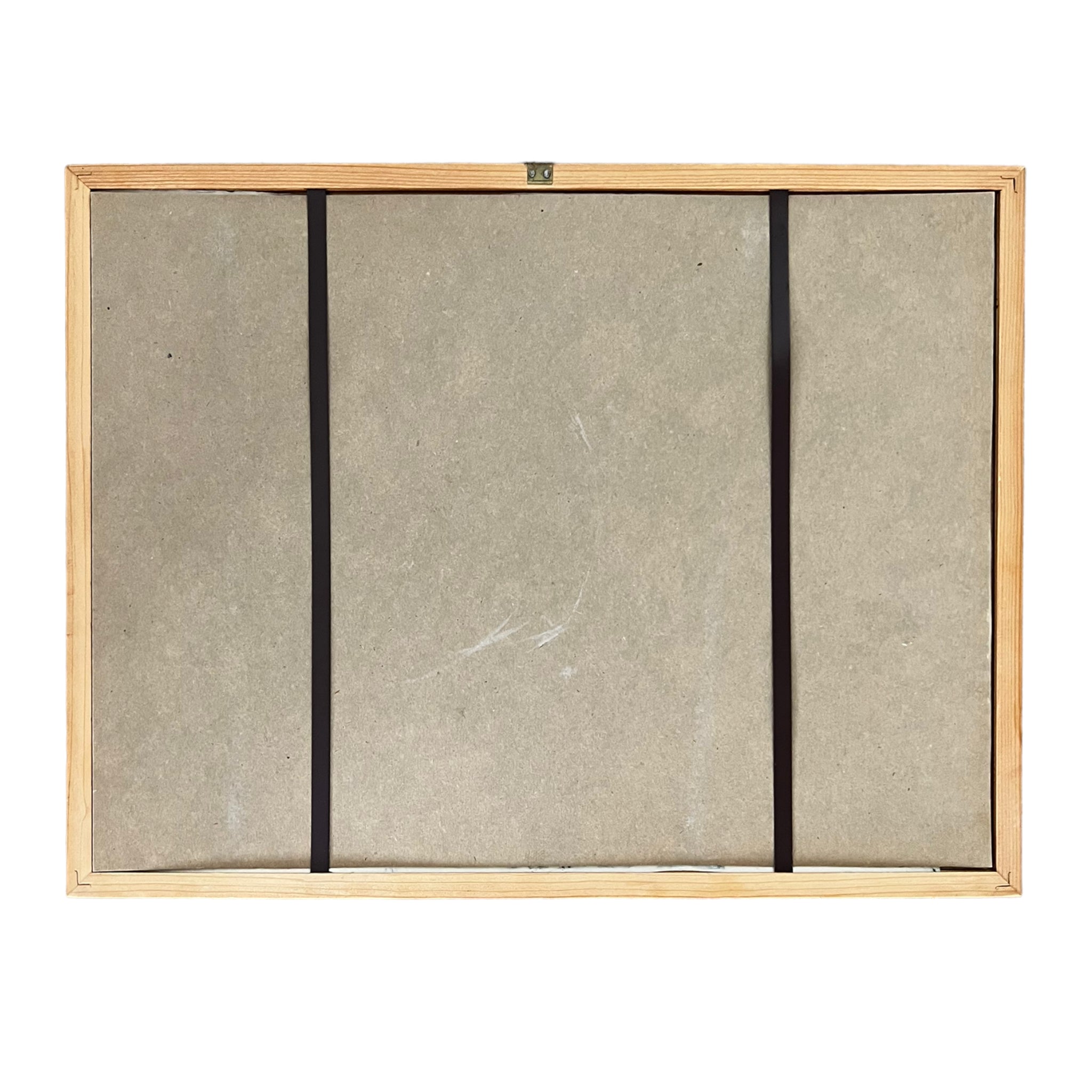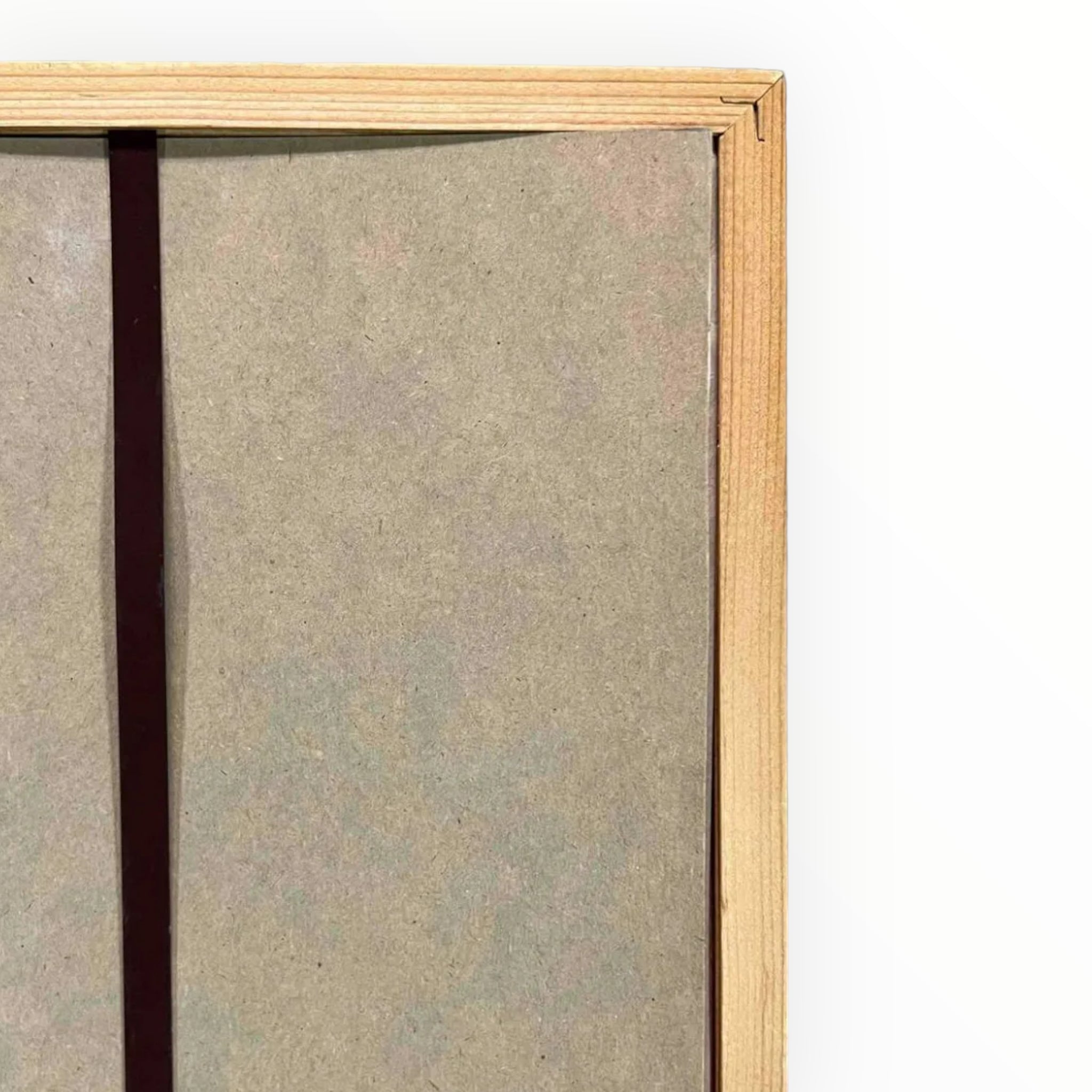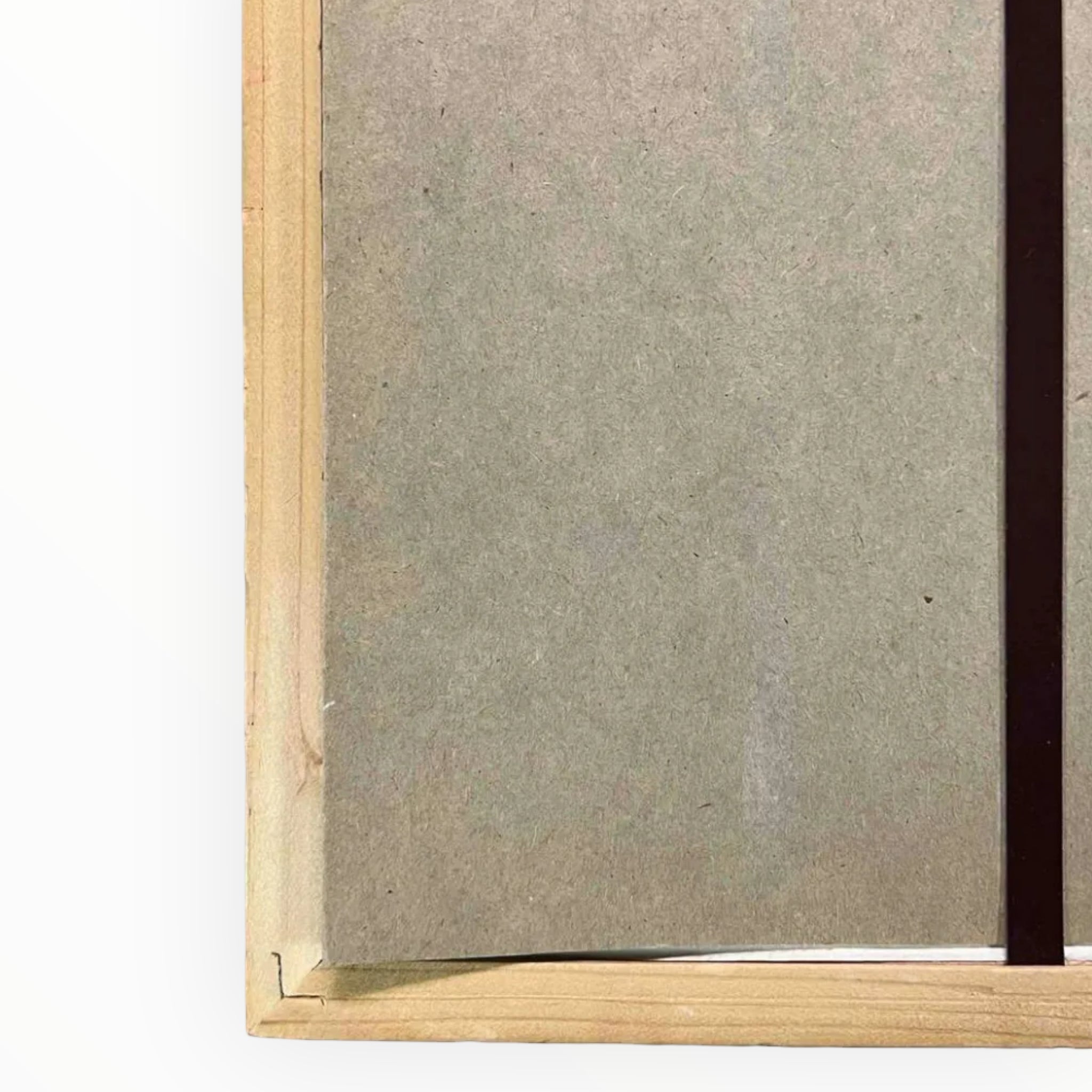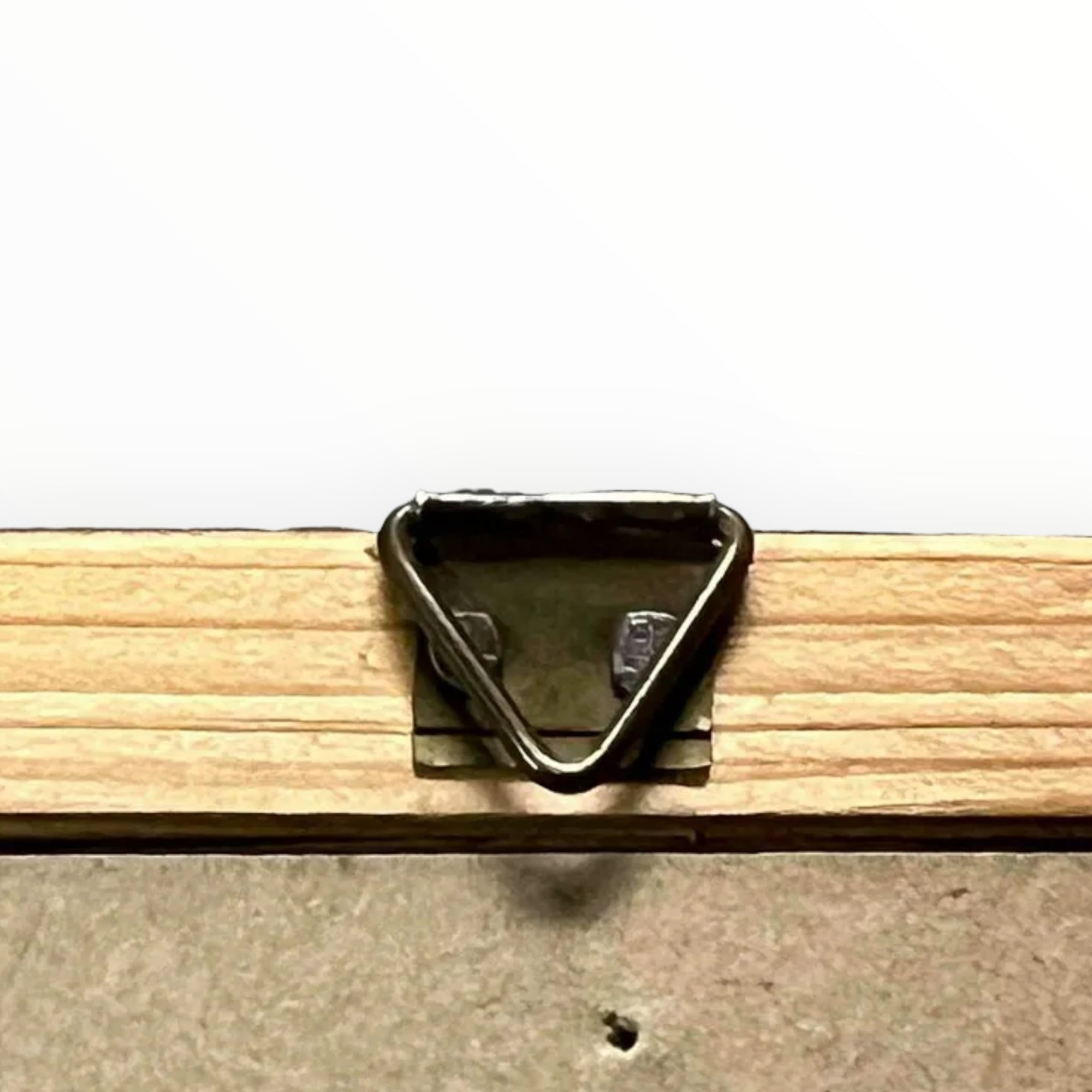Kyoto Japan Print by Clifton Karhu (1927 - 2007)
Couldn't load pickup availability
12 3/4” x 16 5/8”
A woodblock print on paper.A beautiful image of Yasaka Pagoda in Kyoto on a rainy day by Karhu. The spire rises high above the tiled rooftops of the surrounding buildings against a violet sky with golden yellow clouds. Slender lines of rain fall over the scene, changing from a dark violet in the sky to a white in order to contrast with the structures below. A beautiful depiction of Japanese architecture. In great shape. Framed. Signed.
Published by Unsodo with Unsodo “Gei” watermark, title, and publisher seal on the left margin. Clifton Karhu supervised and approved four different prints published by Unsodo in the late 20th Century of which this is one of the four.
Fun fact: The Kento (cut out) on the lower left margin is for color alignment and is not a defect. Yep, the real deal.
Check out the demonstration here: https://www.viewingjapaneseprints.net/texts/topics_faq/kento.html
Born in Duluth, Minnesota, Clifton Karhu was one of the most acclaimed American woodblock artists to work in Japan. Though the son of two painters and artistically inclined from an early age, Karhu joined the military. Stationed at the American Navy base in Sasebo from 1946 to 1948, he fell in love with Japan. Upon his return to the United States, he attended the Minneapolis Art School (1950-1952) before returning to Japan in 1952, this time as a missionary of the Lutheran church. From Hiroshima to Kyoto, he and his wife sold bibles until he became disillusioned with the mission. Settling in Gifu prefecture, he returned to art, working in oils and watercolor. Karhu’s reputation grew swiftly, winning first prize at the Middle Pacific Art Group Exhibition, and held his first solo exhibition at Shin Gifu Gallery.
In 1963, Karhu moved to Kyoto. Immersed in the city’s vibrant artistic community, he began a successful career in woodblock printmaking. His self-carved and self-printed works portray traditional style houses and architectural details. Deeply expressive, yet precise and geometric, Karhu's style earned him enormous popularity worldwide.When asked about his medium, he states: “In Kyoto the vertical and horizontal lines of the tile roofs and the latticed windows strike a special harmony, like something alive. In my prints of Kyoto, I always strive to express this human warmth. Since wood accounts for much of Kyoto’s beauty, it may also be the best way that beauty can be expressed - through woodblock prints.”
Japan
1970s


